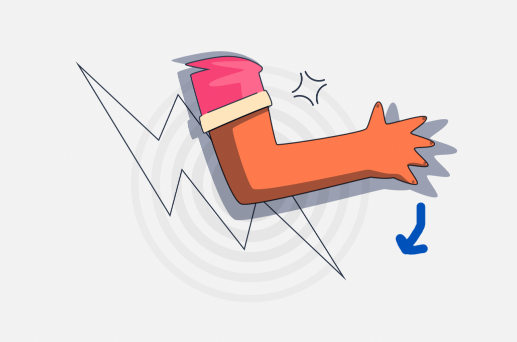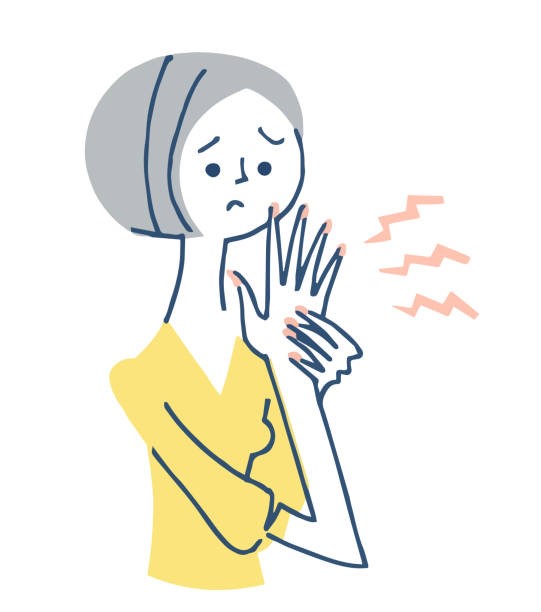The Hidden Pain: Demystifying Tennis Elbow
Picture this:
You're on the tennis court, swinging your racket with precision and power, aiming for that perfect ace. The sun is shining, the crowd is silent in anticipation, and you're in your element. But suddenly, a sharp pain shoots through your elbow, jolting you out of your reverie. You've just been introduced to tennis elbow
Your journey from


is comprehensively explained in this blog.
Whether you're a sports enthusiast, a keyboard warrior, an artist, or just someone trying to carry groceries without wincing, read on to discover your comprehensive guide to understanding, preventing, and overcoming tennis elbow. We'll unravel the mysteries behind this condition, explore its causes and symptoms, and serve up a winning game plan for recovery.
DECODING TENNIS ELBOW:
What is Tennis Elbow?
Although tennis elbow, may sound like an exclusive club for tennis enthusiasts, it is actually quite a widespread condition. It is an overuse injury that occurs when the tendons in your forearm near the elbow joint, become inflamed and painful. Think of these tendons as the strings of a guitar, stretched to their limits with each repetitive motion you make. In essence, tennis elbow is your elbow's way of saying, "Hey, slow down! I need some TLC." It's a reminder that your body deserves care and attention, no matter how hectic life gets..Anatomy Unveiled: The Culprit Behind Tennis Elbow.
Imagine your elbow as a precision-engineered machine, designed to handle a multitude of tasks with grace and ease. Now, let's dive beneath the surface to uncover the intricate machinery responsible for those graceful movements and the unfortunately occasional agonizing twinge known as tennis elbow.The Players:
At the heart of this drama are tendons - the unsung heroes of your musculoskeletal system. Tendons are robust, rope-like structures that connect muscles to bones, enabling your muscles to transmit their power to your skeleton. When it comes to the elbow, two key players are the extensor carpi radialis brevis (ECRB) and the extensor carpi radialis longus (ECRL) tendons.The Setting:
The stage for this ailment is the lateral epicondyle, a bony protrusion on the outer part of your elbow. This is where these tendons attach, forming a vital connection between your forearm muscles and the upper arm bone (humerus).
The Action:
Tennis elbow occurs when these tendons experience repetitive strain and overuse. Think of it as a relentless game of tug-of-war between your forearm muscles and the stubborn tasks you subject them to. Whether it's gripping a tennis racket, typing for hours on end, or any activity that involves repetitive wrist extension and gripping, the ECRB and ECRL tendons bear the brunt of the force.

The Plot Thickens:
As these tendons undergo excessive stress, they can develop microscopic tears and inflammation. When left unchecked, these tiny tears can progress into more substantial damage, leading to pain, weakness, and reduced function.
The Grand Finale:
In the grand finale of this drama, the inflamed and weakened tendons send pain signals to your brain, serving as a distress signal that something is amiss.

THE FIRST SERVE: Recognizing Tennis Elbow's Sneaky Signals
Imagine you're in the middle of an intense tennis match, or perhaps just typing away at your computer, when suddenly, a faint but nagging discomfort creeps into your elbow. You might brush it off as a momentary annoyance, but don't be too quick to dismiss it. Those subtle whispers from your elbow could be the early warning signs of tennis elbow.The Sneak Attack:
Tennis elbow isn't known for making grand entrances. It's more of a stealthy intruder, gradually making its presence known. Before the pain becomes unbearable, it sends out a few subtle signals to let you know that something isn't quite right.1. Tenderness

2. Gradual Ache

3. Weakness in Grip

4. Morning Stiffness

5. Pain During Specific Movements

6. Radiating Pain

7. Difficulty in Extending the Wrist

Don't Ignore the Whispers
It's crucial to heed these early signals because, left unaddressed, tennis elbow can worsen, becoming a more chronic and debilitating condition. Recognizing these symptoms is your first step towards taking control of your pain.Pay attention to your body's whispers and if in doubt, make an appointment with your physiotherapist. They can help you with treatment techniques to relieve pain, as well as exercises to help you strengthen the weak tendons and muscles so that you can perform your daily activities comfortably and play sport like a champion.
Share



